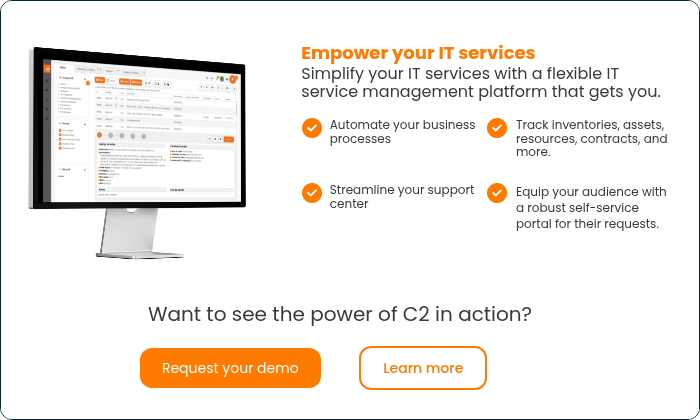The daily challenges of IT professionals could be compared to a soccer team competing for the world cup. Adapting to every game, always in the context of performance and creating effective interaction between teammates, is the key to success. And because of it, IT department managers will recognize themselves in this sports metaphor, their workday being filled with a series of problems related to many queries. Often, their priorities are related to system security, data management or business goals, not to mention service to users.
In fact, to achieve their goals, IT managers must increasingly provide fast and efficient solutions to their users – both in terms of incident/problem solving and total satisfaction – with a sense of winning.
As a definition, we can compare the service to users' knowledge and know-how, which must show a soccer player to respond to corporate passes that stand in his path skillfully. Concretely, end users send their requests to the IT department that need to be treated; these users could be internal (such as other departments employees) and external customers. Furthermore, they must understand the reality of the work environment for each of these users. An efficient service to users must satisfy one of the ultimate goals of any company: responding tirelessly to expectations.
Here are some good reasons for an IT manager to focus their athletic strengths on the service to users:
1. Support your team in providing quality service to its users
Whether in an IT department or a soccer field, team spirit is always a winner. Providing its employees with the best tools from information technology to accomplish tasks, creating value by responding to the corporate strategy and achieving its business objectives is essential in the organization. With streamlined processes and by listening and understanding associated issues, technical teammates will better support users.
2. Bring service quality as a central concern
This second point is closely connected to the previous. For the IT systems’ users, the requirements are notably big in the context of customer service; efficiency and speed of action are prerequisites. Also, the quality of service is directly estimated, amongst others, through these two concepts. With a good IT support team, the end user will have his requests processed with quality ensuring customer satisfaction for the entire company. This virtuous circle is entirely based on the value of the users’ service.
3. Satisfy users and their requests
User requests bring with them complexity in the management of services to users by their distinction. In competition, athletes must learn to perform different plans and tactics within a game. Plus, each element requires skills and diverse knowledge. This is also true for IT managers who, to perform and make their teams perform, must adapt to what they are asked of to optimize user satisfaction and solve service requests. In sum, an efficient service to users minimally overlaps the specific needs of each user category, which can naturally lead to overall user satisfaction.
4. Adapting to each user category
Adapting to each user category falls within the individual’s experience concept. Each individual has a service experience or has his own way of working to fulfill his tasks and achieve established goals. That is why the IT manager must consider enhancing user experience and adapt to the need for improvement to optimize the user’s services. ITSM solutions offer service catalogues in which the service offer may be adjusted and/or filtered to every user category. This way of customizing upstream simplifies the IT requests management and technical resource tasks.
5. Collaborate more effectively
To save time and money, technical resources must support users who are also on the move. Whether on a laptop, tablet or mobile, transparent collaboration between the user and those who will support them will require tools that will also adapt to them. This is why service users can apprehend this mobility and respond in real-time to facilitate process management.





